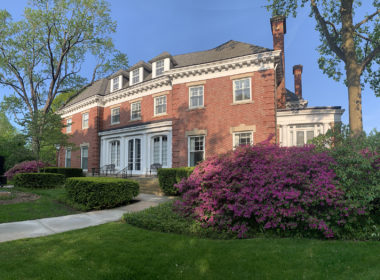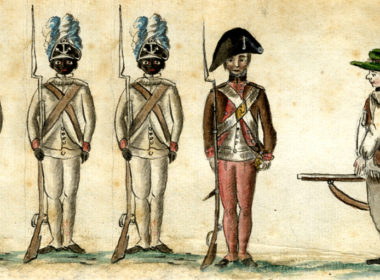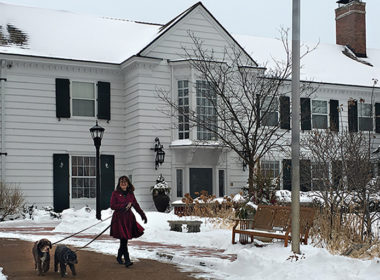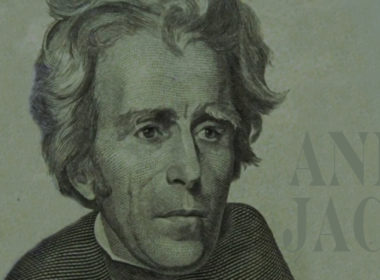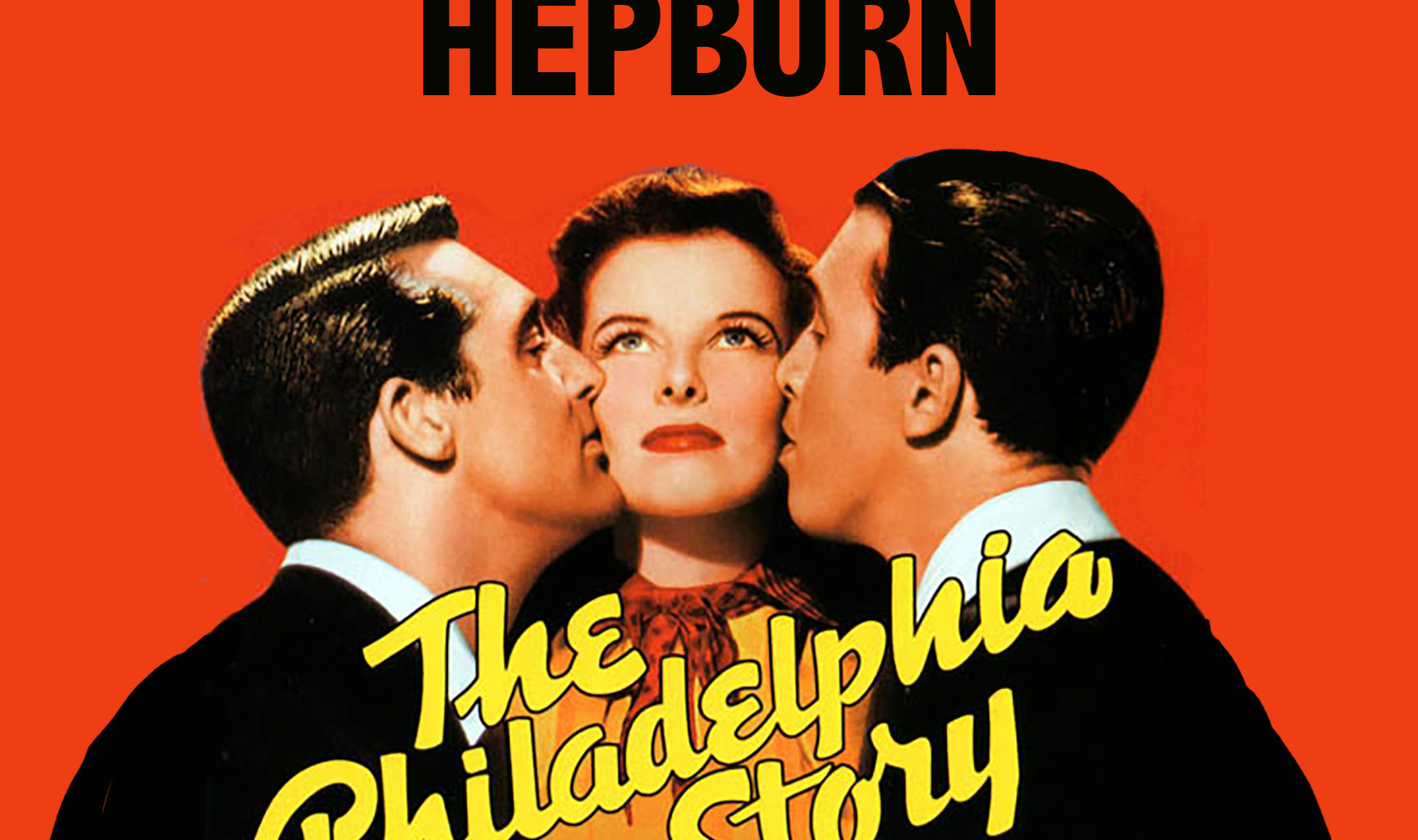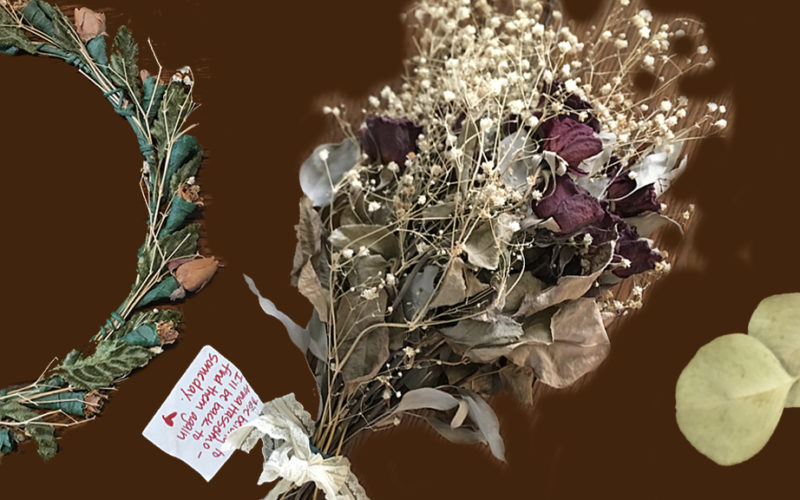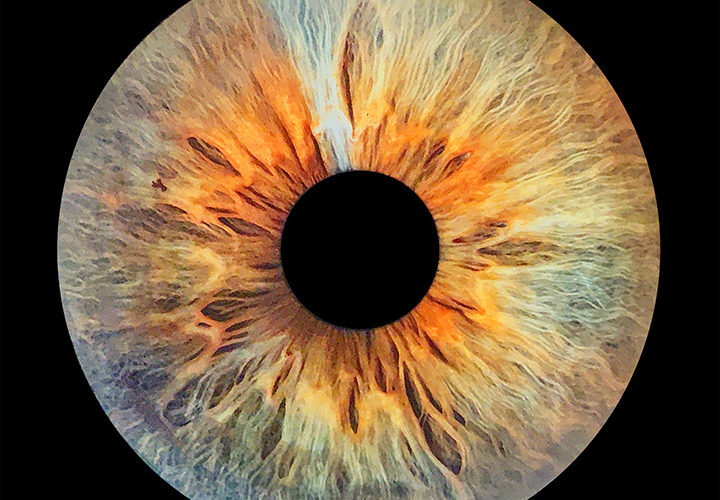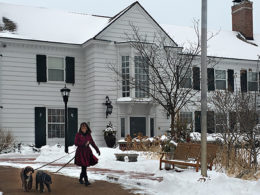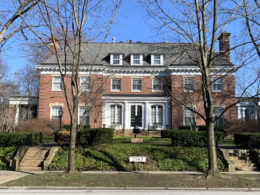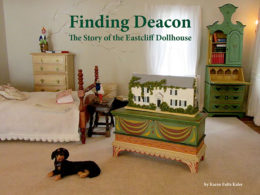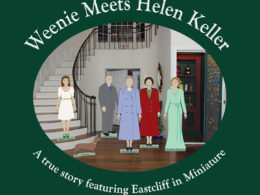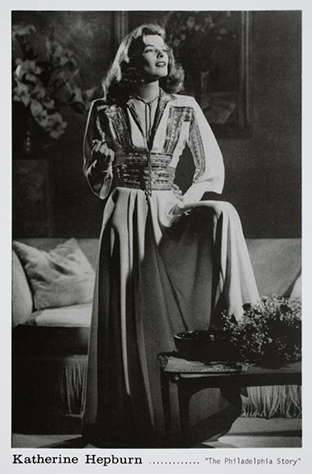
Credit: Weisman Art Museum, Gift of Richard and Ellen Sandor
(Katharine Hepburn spelled Katharine with two A’s, which is unusual. The spelling on the photo above is more common, but incorrect in this case.)
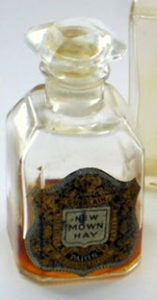
Many famous guests have visited Eastcliff. I have wonderful stories about Katharine Hepburn and Hubert Humphrey in Eastcliff: History of a Home.
Clark Gable visited Eastcliff, but details of that visit are not in the book. While Ted Brooks mentioned with certainty that Gable had visited, he did not supply any details. I did find an intriguing connection between Clark Gable and the Brooks family. Reader, if you know any details about Clark Gable at Eastcliff, please contact me—I’ve been looking for you!
Katharine Hepburn visited more than once while she was on tour in Minneapolis starring in the stage production of The Philadelphia Story. Binky Brooks told me a charming story about Hepburn and her father that includes New Mown Hay perfume, pictured here.
The photo above of Hepburn is part of the collection of the Weisman Art Museum, donated by wonderful art collectors Richard and Ellen Sandor.
Photo of New Mown Hay. The perfume played a touching supporting role in the story of Katharine Hepburn’s visits to Eastcliff.
As described in Eastcliff: History of a Home, Katharine Hepburn’s career was revived by her stage performance in The Philadelphia Story.
Photo shows Katharine Hepburn’s four Academy Award statues (Oscars), on display in front of her portrait in the National Portrait Gallery in Washington, DC. (Photo by Karen Kaler.)
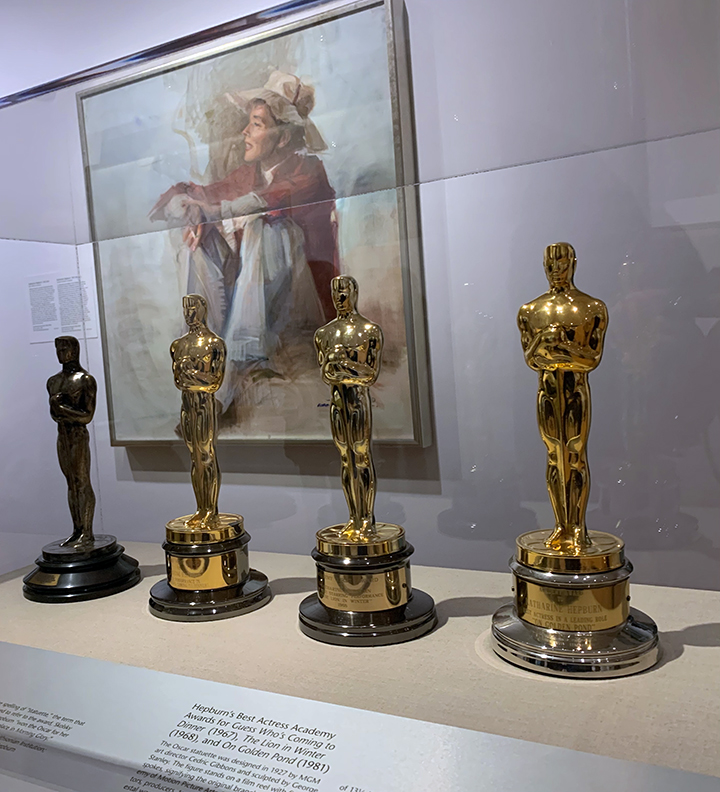
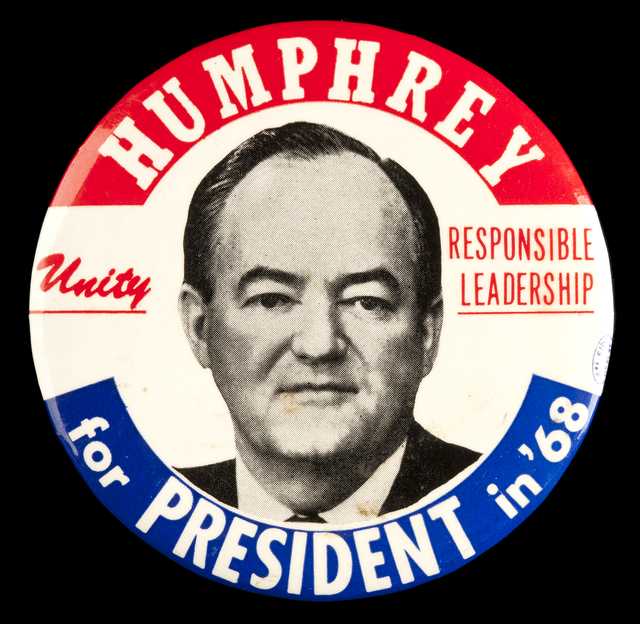
Hubert Humphrey visited the Moos family, as he had and Malcom Moos were close friends. His most memorable visit to Eastcliff is described in the book. As in Katharine Hepburn’s visits to the Brooks family, he likely visited several times.*
On one visit, while he was running for president of the United States, he surprised the family by arriving early in the morning with Secret Service agents in tow. That visit is fully described in Eastcliff: History of a Home. It is one of my favorite stories in the book. Humphrey visited Eastcliff in the morning, then went to a Gopher football game and returned to the house, where the story became memorable.
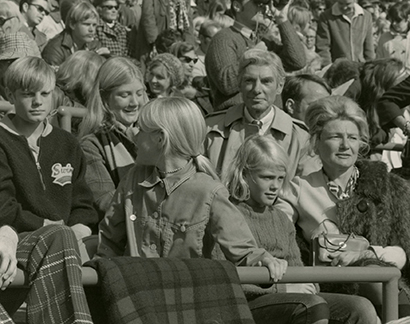
(Photo from the University of Minnesota Digital Conservancy)
Although Hubert H. Humphrey (b. 1911) was five years older than Malcolm C. Moos (b. 1916), Moos graduated first (in 1937, compared to Humphrey’s 1939) because Humphrey took time off to help his father run Humphrey’s Drug Store in South Dakota. During the 1940 presidential campaign, Humphrey supported Franklin Roosevelt and Moos supported Wendell Willkie. They debated on a Minneapolis radio station, as described in Eastcliff: History of a Home.
During their school days, Humphrey had aspired to become a professor of political science, but entered politics rather than finishing his PhD.
Much later, after serving as U.S. vice president, Humphrey taught in the social science department at the University. The political science department rejected him for not having finished his PhD (according to Hy Berman, in Professor Berman, Hy Berman with Jay Weiner, Minnesota Press, 2019).
*Attending a Gopher football game was not unusual for Humphrey, and apparently neither were visits to the Moos at Eastcliff. A footnote cut from the book quoted D. J. Leary: “I was with Humphrey one time when he told Mac Moos over at Eastcliff. . . when we were at some little event and he said, ‘Just get a winning football team and you’ll get everything you need.’” Leary continued, “One of the longstanding photos that’s been around for years is one of Humphrey and McCarthy at a Minnesota football game, both wearing hats; so, it was a real central part of that.”
(D. J. Leary, graduate of the University and former politician and public affairs media consultant, was interviewed by Clarke A. Chambers on October 3, 1995. This interview and other interviews by Clark Chambers and Ann Pflaum are available online in the University of Minnesota digital conservancy.)
In the other white house
Moos received his PhD from the University of California at Berkeley, then taught at Johns Hopkins University. As a young professor, Moos went on a blind double date and married his friend’s date, Tracy Gager, not long after.
The president of Johns Hopkins University at the time was Milton Eisenhower. (Tracy recalled to me that when the Johns Hopkins University president’s residence was being built in 1958-59, people called it “Milton’s Hilton.”)
Malcolm Moos joined the staff of U.S. President Dwight Eisenhower in 1957 as a special assistant, and became his chief speechwriter in 1958. Milton Eisenhower was reportedly annoyed to have a valued professor poached by his older brother. (Dwight Eisenhower had also been a university president, at Columbia, but Milton was more successful in that line of work.)
Malcolm Moos wrote President Eisenhower’s most famous line from his final speech as president: “In the councils of government, we must guard against the acquisition of unwarranted influence, whether sought or unsought, by the military-industrial complex.”
Margaret Tracy Gager Moos (aka Tracy) had earlier connections to the Eisenhower family. She knew Dwight and Mamie Eisenhower’s son John when they were both children. They saw each other again at a White House event (after she married Malcolm Moos), then reconnected when they were both in their eighties. John told Tracy he had had a crush on her when they were middle-school friends, so he was surprised years later to see his father’s speechwriter with “his girl.”
During Malcolm Moos’s White House years, Tracy became good friends with Richard Nixon’s loyal secretary, Rose Mary Woods. Woods was likely the most famous secretary in America after she explained how she accidentally erased portions of Nixon’s tape recordings.
Tracy attracted other interesting friends when she moved to Minnesota, including Dean Zimmerman, whom she invited to the opera while her husband was president of the University of Minnesota. (He declared he would attend, and bring his dog as his date.)
Dean Zimmerman co-founded North Country Co-op. In 1972, he donated three dozen eggs to throw at George Romney in the largest demonstration on campus against the Vietnam War. He was arrested in the protest, and said “I was holding 11 eggs when they arrested me. They arrested me for the one I didn’t have.” Thirty years later he was on the Minneapolis City Council as a member of the Green Party, where he was an outspoken proponent of personal rapid transit. (The Co-op Wars, http://www.radicalrootsfilm.com/)
Zimmerman was later arrested on more serious charges than missing the twelfth egg. He was convicted of bribery in 2006 and spent time in federal prison. According to a City Pages article, he responded, “money, money, money,” when a real estate developer asked how he could get his support for a zoning change. City Pages continued, “Zimmermann is one of the nicest (and strangest) men ever to hold elected office in Minneapolis. But it’s tough to get past that one phrase: ‘money, money, money.’” (http://www.citypages.com/best-of/2006/people-and-places/dean-zimmerman-7362004)
Please note: The above text was edited from Eastcliff: History of a Home due to lack of space. It is intended as a supplement to the book.

